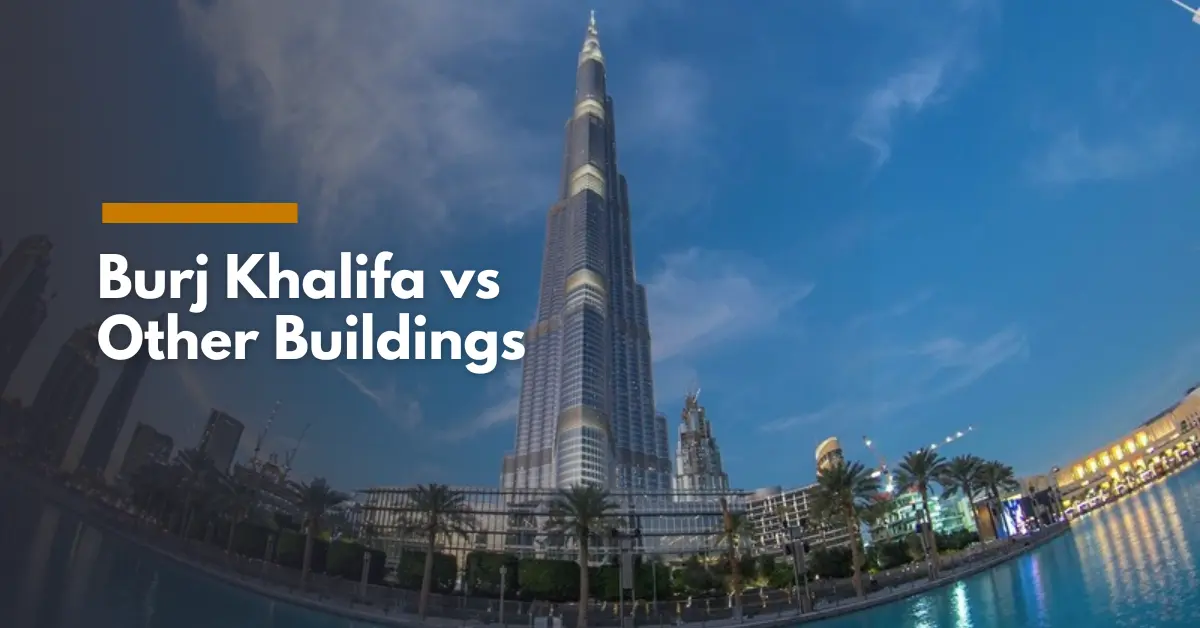
Burj Khalifa vs Other Buildings: What Makes it Unique?
The Burj Khalifa stands as a monumental testament to human ingenuity and architectural prowess, proudly holding the title of the tallest building in the world. Towering at an impressive height of 828 meters, it is a beacon of modern engineering and a symbol of Dubai’s rapid transformation into a global city, often highlighted in discussions of Burj Khalifa vs Other Buildings for its unparalleled height and design.
This skyscraper has redefined what it means to build tall, setting new standards for future constructions. In this article, we will explore the various facets that make the Burj Khalifa a remarkable achievement in architecture and design.
What Makes the Burj Khalifa the Tallest Building?
The Burj Khalifa, reaching 828 meters, is the tallest building in the world, surpassing all previous records. Constructed using innovative engineering techniques, it utilizes high-strength concrete that ensures stability at such extreme heights. The design incorporates a unique triple-lobed footprint, which enhances its structural integrity and allows it to withstand strong winds that are prevalent in the region. This engineering feat is a testament to the architects and engineers who meticulously planned and executed the project, ensuring that every element contributed to the building’s height and stability.
The precise height of 828 meters symbolizes more than just the tallest skyscraper; it reflects the ambition and vision of the United Arab Emirates to position itself as a leader in architectural innovation. Each floor of the Burj Khalifa was constructed with an eye toward sustainability and functionality, showcasing eco-friendly designs alongside luxury residential spaces. Furthermore, the building’s height is accentuated by its stunning façade, which features a unique cladding system that adds to its aesthetic appeal while providing essential thermal insulation. The Burj Khalifa indeed represents an extraordinary blend of form and function, making it a landmark achievement in modern architecture.
Architectural Features of the Burj Khalifa
The architectural features of the Burj Khalifa are as striking as its height. Designed by the renowned architect Adrian Smith of Skidmore, Owings & Merrill, the tower’s design is inspired by traditional Islamic architecture, creating a harmonious blend of cultural significance and modern aesthetics. Its exterior is clad in reflective glass and polished stainless steel, which not only enhances its beauty but also contributes to energy efficiency. The building’s tapering silhouette rises gracefully into the sky, symbolizing a minaret while integrating elements that pay homage to Dubai’s Arabian heritage.
Moreover, the Burj Khalifa’s observation deck, located on the 148th floor, provides breathtaking panoramic views of Dubai and beyond, allowing visitors to appreciate the vast landscapes and the intricate layout of the city. Inside, the tower houses luxurious residences, corporate suites, and a hotel, all designed with the utmost attention to detail and comfort. The integration of art and landscaping within and around the building further enhances its status as a cultural icon, making it not only a skyscraper but also a vibrant part of Dubai’s urban fabric.
How the Burj Khalifa Compares to Other Skyscrapers
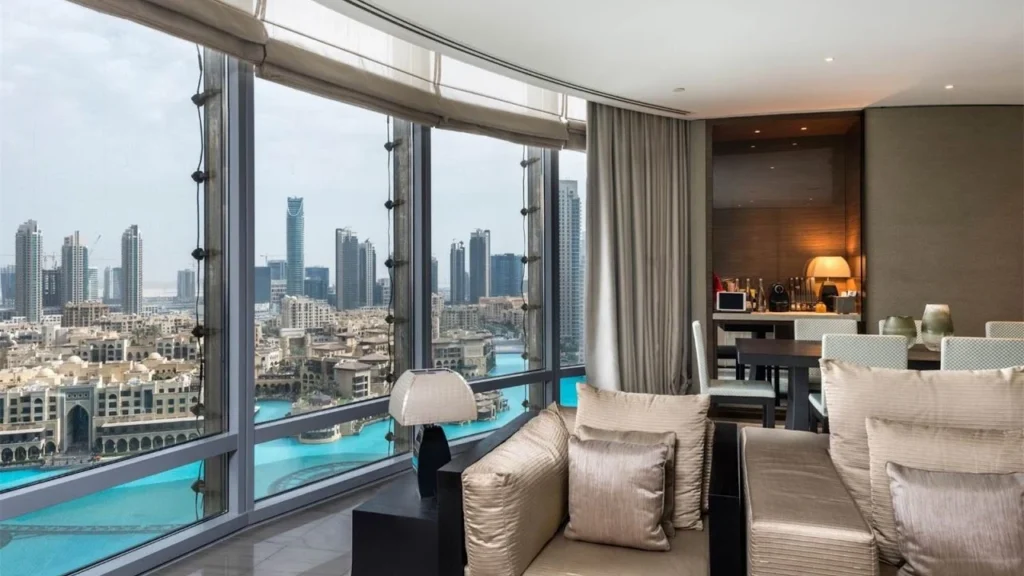
When comparing the Burj Khalifa to other tall buildings, it becomes clear why it is revered as the tallest structure in the world. For instance, the Shanghai Tower, which stands at 632 meters, is a remarkable feat in its own right but pales in comparison to the height of the Burj Khalifa. Additionally, the Lotte World Tower in South Korea, reaching 555 meters, and the Taipei 101, which was once the tallest building in the world at 508 meters, also highlight the significant leap in architectural ambition that the Burj Khalifa represents. The Burj Khalifa’s advanced engineering techniques and innovative design set a new benchmark in the realm of skyscrapers.
Moreover, the Burj Khalifa’s global recognition as the world’s tallest building has influenced urban development worldwide, prompting cities to invest in ambitious skyscraper projects. Its dominance in height has made it a point of reference for architects and developers looking to push the boundaries of vertical construction. As cities like Jeddah in Saudi Arabia aim to construct new towers that aspire to surpass the Burj Khalifa, the building continues to inspire a new generation of architectural innovation and competition in the field of high-rise construction.
How Does the Burj Khalifa Compare to Other Tall Buildings?
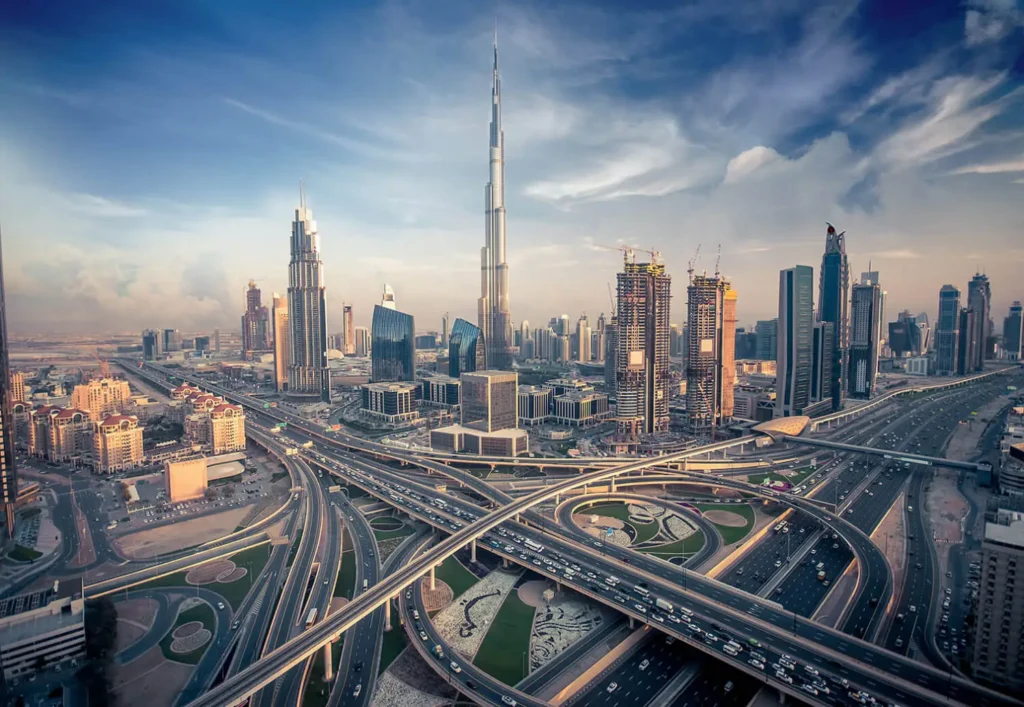
In the ongoing debate about the tallest buildings in the world, a significant comparison arises between the Burj Khalifa and the Shanghai Tower. The Burj Khalifa, standing at 828 meters, is currently the tallest building globally, while the Shanghai Tower reaches a height of 632 meters. This stark difference of 196 meters highlights the monumental achievement of the Burj Khalifa, which has held its title since its completion in 2010. The architectural and engineering innovations that facilitated its unprecedented height have set a standard that is yet to be surpassed.
Furthermore, the Burj Khalifa’s design emphasizes not only height but also the integration of functionality and aesthetics. While the Shanghai Tower features a twisting design that enhances its aerodynamic efficiency, it cannot match the sheer verticality of Dubai’s architectural marvel. The Burj Khalifa’s observation deck and luxurious amenities also provide an experience that reinforces its status as the tallest and most iconic skyscraper in the world, drawing millions of visitors annually who wish to witness the breathtaking views it offers.
Burj Khalifa vs. Lotte World Tower: Which Is Taller?
The comparison between the Burj Khalifa and the Lotte World Tower further emphasizes the former’s supremacy in height. The Lotte World Tower, located in South Korea, stands at 555 meters, making it the tallest building in the country. However, it still falls significantly short of the Burj Khalifa’s staggering height of 828 meters. This difference of 273 meters underscores the architectural prowess and ambitious vision behind the Burj Khalifa’s construction, which has set a benchmark for skyscrapers worldwide.
Moreover, the Burj Khalifa’s design not only aims for height but also incorporates elements that represent the culture and heritage of the United Arab Emirates. In contrast, while the Lotte World Tower features modern aesthetics, it lacks the same cultural resonance. The Burj Khalifa’s combination of height and cultural significance has cemented its place as a global icon, attracting tourists and architecture enthusiasts who seek to experience the world’s tallest building firsthand.
The Rise of New Competitors: Jeddah Tower and Others
As the Burj Khalifa continues to reign as the tallest building in the world, new competitors are emerging on the horizon. The Jeddah Tower, currently under construction in Saudi Arabia, is designed to surpass the Burj Khalifa by reaching an estimated height of over 1,000 meters. This ambitious project aims not only to claim the title of the tallest building but also to showcase Saudi Arabia’s investment in modern architecture and urban development. The Jeddah Tower’s design reflects a blend of traditional and contemporary elements, aiming to create a new icon for the region.
Other projects, such as the Dubai Creek Tower, also seek to challenge the Burj Khalifa’s supremacy. Though these new contenders bring exciting possibilities for architectural innovation, the Burj Khalifa remains a monumental achievement that has shaped the skyline of Dubai and the future of skyscraper design. Its influence on urban development and its role as a cultural landmark ensure that, regardless of future competition, the Burj Khalifa’s legacy will be felt for years to come.
What Are the Key Engineering Marvels of the Burj Khalifa?
The Burj Khalifa’s construction involved the use of cutting-edge materials that are pivotal in supporting its unprecedented height. High-strength concrete was utilized extensively, allowing for a robust structural framework that can withstand the stresses of wind and seismic activities. This innovative concrete mixture, developed specifically for the project, plays a crucial role in ensuring the building’s longevity and stability. Additionally, the incorporation of a unique cladding system not only enhances the aesthetic appeal of the tower but also provides essential insulation, contributing to energy efficiency.
The use of advanced materials extends beyond just concrete. The glass façade, which comprises reflective and insulating properties, helps regulate temperature and reduces energy consumption. This thoughtful approach to material selection embodies the principles of sustainable architecture, illustrating how modern skyscrapers can achieve elegance without compromising environmental responsibility. Thus, the Burj Khalifa stands as a testament to the role of innovative materials in redefining the possibilities of tall buildings.
Structural Techniques That Allow for Super Tall Buildings
The engineering techniques employed in the Burj Khalifa are crucial to its status as the tallest man-made structure in the world. One of the most significant methodologies is the use of a bundled tube structural system, which enhances the building’s ability to resist lateral forces, such as wind. This design allows for a slender profile, which is essential for achieving height while maintaining stability. The careful consideration of structural dynamics during the design phase exemplifies the advanced engineering principles that underpin the Burj Khalifa’s construction.
Additionally, the foundation of the Burj Khalifa is another engineering marvel, consisting of large concrete piles that support the massive weight of the structure. This foundation was designed to withstand the challenges posed by the sandy soil of Dubai, ensuring that the building remains secure and stable for generations to come. These innovative structural techniques not only highlight the advancements in engineering but also pave the way for future skyscrapers that aspire to achieve similar heights and stability.
The Role of Emaar Properties in Its Development
Emaar Properties played a pivotal role in the development of the Burj Khalifa, overseeing its construction from inception to completion. As a leading real estate developer in the United Arab Emirates, Emaar’s vision was to create a landmark that would symbolize Dubai’s progress and ambition on the global stage. The company collaborated with top architects and engineers to ensure that every aspect of the Burj Khalifa was executed flawlessly, from design to construction. Their commitment to excellence is evident in the building’s intricate details and impressive scale.
Moreover, Emaar Properties continues to manage and promote the Burj Khalifa as a premier destination for tourists and residents alike. By offering unique experiences, such as access to the observation deck and luxury dining options, Emaar has positioned the Burj Khalifa as a key attraction within Downtown Dubai. This ongoing commitment to maintaining the tower’s status ensures that it remains an emblem of architectural innovation and serves as a blueprint for future developments in urban environments worldwide.
What Visitor Experiences Can You Have at the Burj Khalifa?
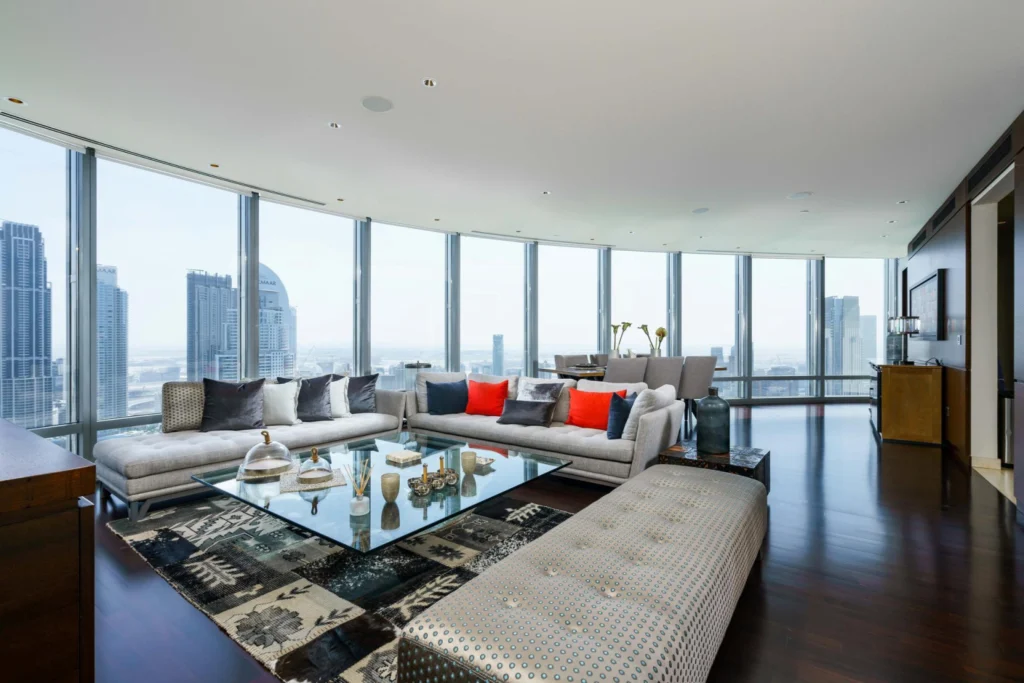
Visiting the observation deck of the Burj Khalifa is a captivating experience that offers breathtaking views of Dubai and its surroundings. The deck, located on the 148th floor of Burj Khalifa, is the highest observation deck in the world, allowing visitors to marvel at the stunning skyline from a vantage point like no other. As you ascend in the high-speed elevator, anticipation builds, culminating in the awe-inspiring moment when the doors open to reveal panoramic vistas that stretch for miles. The unique perspective from this height provides an unparalleled opportunity to appreciate the architectural diversity of Dubai.
In addition to the stunning views, the observation deck features interactive displays that educate visitors about the history and significance of the Burj Khalifa, enhancing the overall experience. Visitors can also enjoy a multimedia presentation that showcases the construction journey of this architectural marvel. The combination of breathtaking views, educational elements, and the sheer thrill of standing atop the tallest structure in the world makes a visit to the observation deck a must-do for anyone traveling to Dubai.
Dining and Entertainment Options in the Burj Khalifa Tower
The Burj Khalifa is not only a marvel of architecture but also a hub for dining and entertainment. The tower houses several high-end restaurants and lounges that offer exquisite culinary experiences with stunning views of the city. At Atmosphere, located on the 124th floor of Burj Khalifa, guests can indulge in gourmet dishes while enjoying a breathtaking backdrop of the Dubai skyline. This dining experience is complemented by a selection of fine wines and impeccable service, creating a luxurious ambiance that is hard to replicate.
Additionally, the Burj Khalifa regularly hosts events, including art exhibitions and cultural performances, making it a vibrant center for entertainment. The tower’s design includes spaces that accommodate various events, from corporate functions to private celebrations. This multifaceted approach to entertainment and dining at the Burj Khalifa from a mere skyscraper into a lively destination that attracts both locals and tourists, enhancing its status as a cultural landmark in Dubai.
How Has the Burj Khalifa Influenced Skyscraper Design Worldwide?
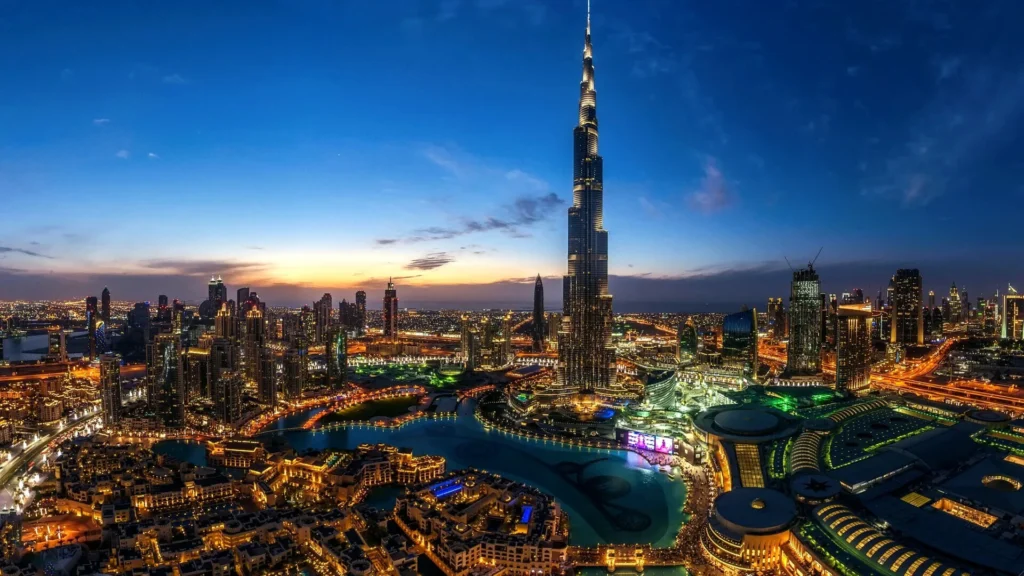
The Burj Khalifa has set new standards in skyscraper design, inspiring architects and developers around the globe. Its unprecedented height and innovative design have prompted a reevaluation of what is possible in tall building construction. The techniques and materials used in the Burj Khalifa serve as a blueprint for future skyscrapers, encouraging the integration of advanced engineering practices and sustainable design principles. As cities expand vertically to accommodate growing populations, the Burj Khalifa’s influence on skyscraper design becomes increasingly evident.
Moreover, the Burj Khalifa’s success has sparked a wave of ambition in urban planning, with many cities now investing in their own skyscraper projects that aspire to rival this architectural marvel. The tower’s iconic status and its role in enhancing Dubai’s global profile highlight the potential for tall buildings to serve as landmarks that shape the identity of a city. This influence extends beyond aesthetics; it encompasses the practical aspects of living and working in high-rise environments, fostering innovations that improve the quality of life in urban spaces.
The Impact of Burj Khalifa on Urban Planning in Dubai
The Burj Khalifa has significantly influenced urban planning in Dubai, serving as a catalyst for development in the surrounding areas. Its presence has spurred the creation of Downtown Dubai, a vibrant mixed-use district that features residential, commercial, and entertainment spaces. The development of this area emphasizes the importance of integrating tall buildings into a cohesive urban environment, allowing for pedestrian-friendly spaces and a diverse range of amenities. The Burj Khalifa’s role in this transformation exemplifies how a single structure can reshape an entire neighborhood.
Additionally, the Burj Khalifa has inspired other architectural projects in Dubai, promoting a culture of innovation and excellence in design. As a focal point for tourism, the tower attracts millions of visitors annually, contributing to the local economy and encouraging further investments in infrastructure and amenities. This impact on urban planning demonstrates how the Burj Khalifa has not only redefined the skyline but also enhanced the livability and attractiveness of Dubai as a global city.
Burj Khalifa as a Blueprint for Future Projects
The Burj Khalifa serves as a blueprint for future architectural projects, illustrating the possibilities of supertall buildings. As developers around the world aim to create structures that push the boundaries of height and design, they often reference the engineering and architectural innovations seen in the Burj Khalifa. Its successful integration of luxury, functionality, and sustainability has set a high bar for upcoming skyscraper projects, encouraging a focus on creating buildings that are not only tall but also environmentally responsible and socially engaging.
Moreover, the design principles established by the Burj Khalifa inform contemporary architectural practices, emphasizing the importance of aesthetics, cultural relevance, and technological advancements. As cities continue to grow and urbanize, the lessons learned from the Burj Khalifa’s construction and design will undoubtedly influence the next generation of skyscrapers, ensuring that they meet the evolving needs of urban populations while maintaining their status as architectural landmarks.
What Is the Cultural Significance of the Burj Khalifa?
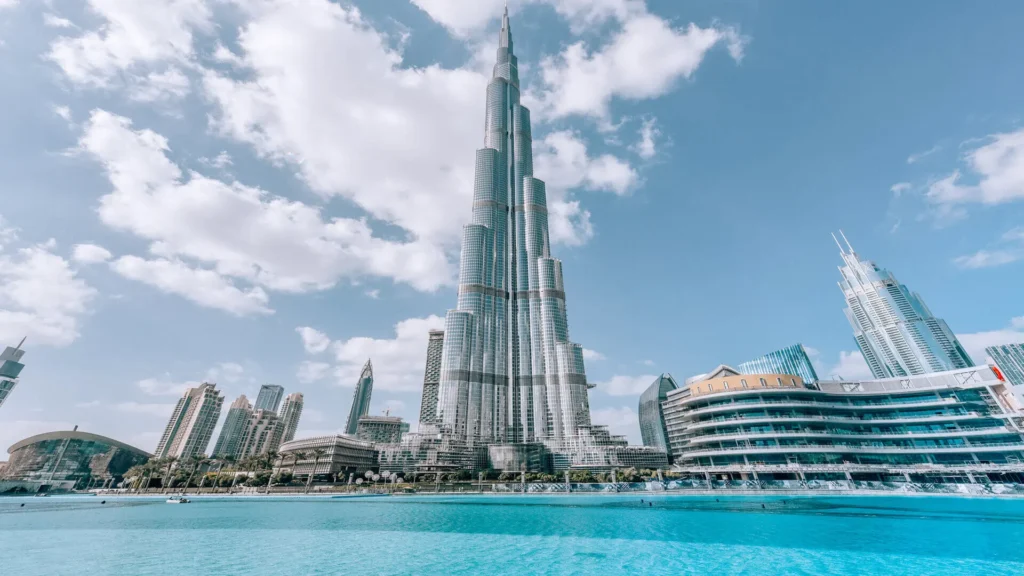
The Burj Khalifa has become an iconic symbol in popular culture, frequently featured in movies, television shows, and advertisements. Its striking silhouette and unparalleled height make it a sought-after backdrop for filmmakers looking to capture the essence of luxury and innovation. Films like “Mission: Impossible – Ghost Protocol,” which showcased thrilling stunts atop the Burj Khalifa, have further cemented its status as a cultural phenomenon. This representation in media not only highlights the architectural feat but also promotes Dubai as a premier destination for tourism and entertainment.
Moreover, it has appeared in various promotional campaigns, enhancing its visibility and significance in global culture. Its image is often associated with prosperity and progress, reflecting the aspirations of the United Arab Emirates. This cultural significance extends beyond entertainment; it serves as a source of national pride for residents and a symbol of Dubai’s rapid development. The Burj Khalifa’s integration into popular culture ensures that it remains a focal point of interest and admiration, inspiring countless individuals around the world.
The Symbolism of Burj Khalifa for Dubai and UAE
It serves as a powerful symbol of Dubai’s ambition and the United Arab Emirates’ rapid development. It represents a vision for the future, showcasing the country’s commitment to innovation, luxury, and global prominence. As the tallest building in the world, the Burj Khalifa stands as a testament to what can be achieved through determination and collaboration, embodying the spirit of progress that defines the UAE. Its prominence in the skyline reflects the aspirations of a nation that has transformed itself into a global hub for business and tourism.
Additionally, the Burj Khalifa’s architectural design, which draws inspiration from traditional Islamic motifs, serves as a reminder of the rich cultural heritage of the region. It bridges the gap between modernity and tradition, creating a unique identity for Dubai that resonates with both residents and visitors. This symbolism extends beyond its physical presence; it inspires pride and unity among the people of the UAE, reinforcing a collective identity centered around innovation and achievement.
Hosting Global Events and Celebrations at the Burj Khalifa
The Burj Khalifa has become a premier venue for hosting global events and celebrations, attracting attention from around the world. Its iconic status makes it the perfect backdrop for New Year’s Eve fireworks displays, which draw thousands to Downtown Dubai each year. These events not only showcase the building’s architectural brilliance but also highlight Dubai’s reputation as a vibrant city that celebrates cultural diversity and innovation. It’s role in such festivities reinforces its significance as a cultural landmark.
FAQ’s For Burj Khalifa vs Other Buildings
What is the tallest building in the world?
The tallest building in the world is the Burj Khalifa in Dubai, which stands at a height of 828 meters (2,717 feet).
How does the Burj Khalifa compare to the Shanghai Tower?
The Burj Khalifa is the tallest skyscraper globally, while the Shanghai Tower is the second tallest, reaching 632 meters (2,073 feet). The Burj Khalifa remains the tallest tower, surpassing the Shanghai Tower by 196 meters.
What distinguishes the Burj Khalifa from the One World Trade Center?
The Burj Khalifa is the tallest structure ever built, standing at 828 meters, whereas the One World Trade Center in New York City is 541 meters (1,776 feet) tall. Thus, the Burj Khalifa is significantly taller than One World Trade Center.
Is the Burj Khalifa the tallest freestanding structure in the world?
Yes, the Burj Khalifa is the tallest freestanding structure in the world, a title it has held since its completion in 2010.
What architectural features make the Burj Khalifa unique?
The Burj Khalifa was designed with a unique triple-lobed footprint and a curtain wall that contributes to its height and stability. Its design incorporates elements that ensure it can withstand high winds common in Dubai.
How does the Empire State Building compare to the Burj Khalifa?
The Empire State Building, once the tallest building in the world, stands at 381 meters (1,250 feet) without its antenna. In comparison, the Burj Khalifa’s height of 828 meters makes it more than double the height of the Empire State Building.
What is the significance of Khalifa bin Zayed Al Nahyan about the Burj Khalifa?
The Burj Khalifa is named after Khalifa bin Zayed Al Nahyan, the ruler of Abu Dhabi and the President of the United Arab Emirates, in recognition of his support for the project.
How many stories does the Burj Khalifa have?
The Burj Khalifa has 163 floors above ground, making it one of the tallest buildings in terms of the number of stories.
What is the view like from the top of the Burj Khalifa?
The view from the top of the Burj Khalifa offers panoramic vistas of Dubai and its surroundings, providing a unique perspective of the cityscape and beyond.
How long did it take to build the Burj Khalifa?
Construction of the Burj Khalifa began in 2004 and was completed in 2010, taking approximately six years to build the tallest tower in the world.




